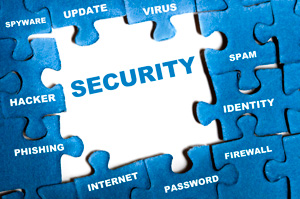 Passwords Are Your First Defense In Internet Security
Passwords Are Your First Defense In Internet Security
In today’s world we all have dozens of usernames and passwords for countless online accounts. From email and social media to online shopping and banking, it seems like every website we get on wants us to “log-in.” So what do we do? We have the same password for everything of course! Or we make the password something extremely obvious so that we remember it. But when we make the password obvious for ourselves, we are also making it obvious for hackers. Here are some useful tips for creating a strong password to keep your accounts secure.
1. Do not use your real name, username or company name in the password
2. Do not use the name of the program, website, or name of the account you are trying to access
3. Do not use full/complete words
4. Make it different from other passwords
5. Use at least 8 characters
6. Use characters from all of these categories
a. Uppercase letters
b. Lowercase Letters
c. Numbers
d. Symbols found on the keyboard ($%#*)
e. Spaces
Here are some of the worst passwords, thanks to TIME magazine. If you’re using one of the passwords on this list, it’s time to change it!
1. 123456
2. password
3. 12345678
4. qwerty
5. abc123
6. 123456789
7. 111111
8. 1234567
9. iloveyou
10. adobe123
11. 123123
12. admin
13. 1234567890
14. letmein
15. photoshop
16. 1234
17. monkey
18. shadow
19. sunshine
20. 12345
21. password1
22. princess
23. azerty
24. trustno1
25. 000000
Too much to remember? Consider using a password manager, such as Last Pass, that can keep you secure seamlessly from desktop to smartphone.
Don’t be an easy target for hackers. Do yourself and your business a favor by making sure your passwords are strong to ensure the security of all your accounts!
 Passwords Are Your First Defense In Internet Security
Passwords Are Your First Defense In Internet Security




